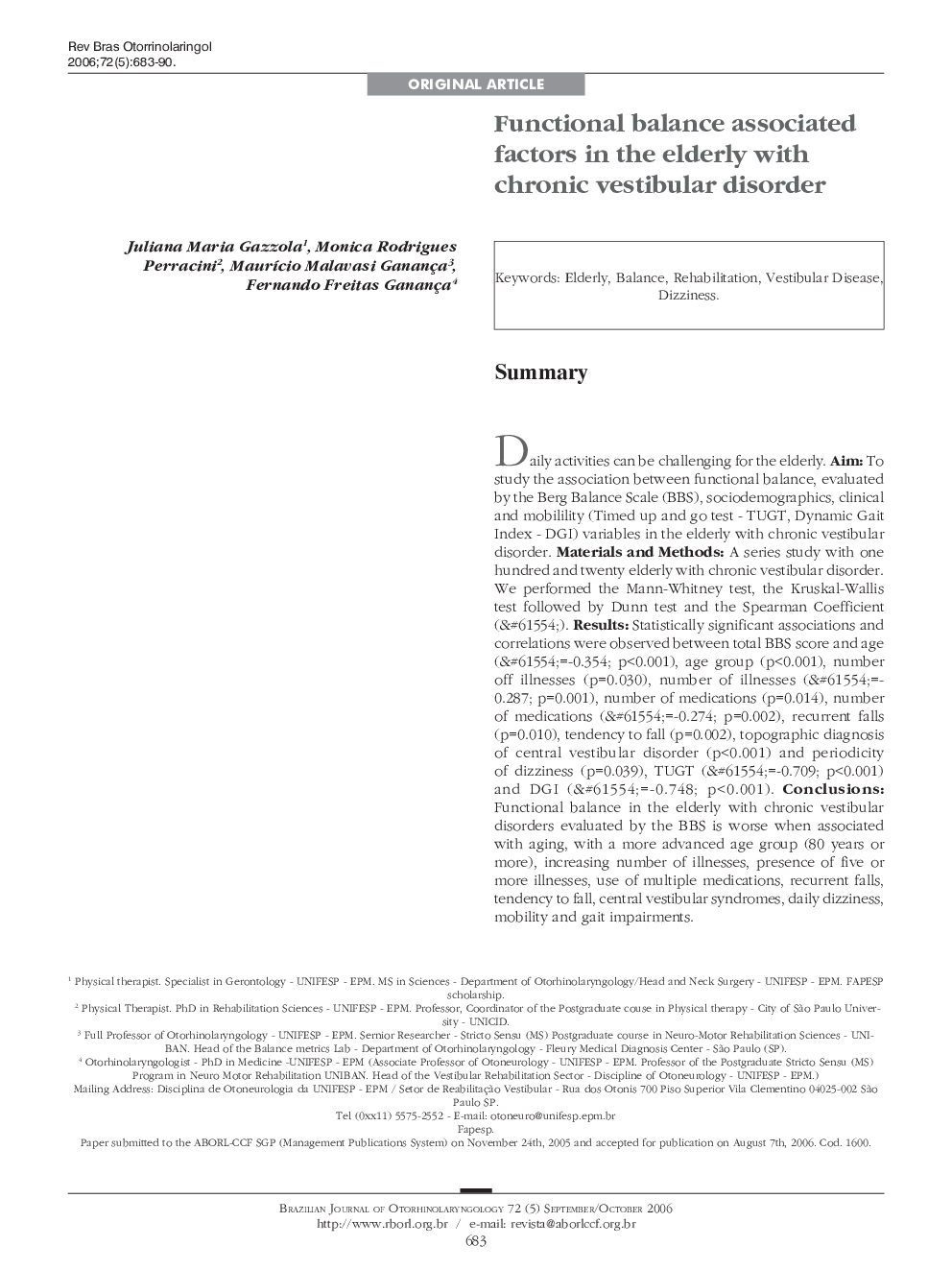| Article ID | Journal | Published Year | Pages | File Type |
|---|---|---|---|---|
| 4107410 | Brazilian Journal of Otorhinolaryngology | 2006 | 8 Pages |
SummaryDaily activities can be challenging for the elderly.AimTo study the association between functional balance, evaluated by the Berg Balance Scale (BBS), sociodemographics, clinical and mobilility (Timed up and go test - TUGT, Dynamic Gait Index - DGI) variables in the elderly with chronic vestibular disorder.Materials and MethodsA series study with one hundred and twenty elderly with chronic vestibular disorder. We performed the Mann-Whitney test, the Kruskal-Wallis test followed by Dunn test and the Spearman Coefficient ().ResultsStatistically significant associations and correlations were observed between total BBS score and age (=-0.354; p<0.001), age group (p<0.001), number off illnesses (p=0.030), number of illnesses (=-0.287; p=0.001), number of medications (p=0.014), number of medications (=-0.274; p=0.002), recurrent falls (p=0.010), tendency to fall (p=0.002), topographic diagnosis of central vestibular disorder (p<0.001) and periodicity of dizziness (p=0.039), TUGT (=-0.709; p<0.001) and DGI (=-0.748; p<0.001).ConclusionsFunctional balance in the elderly with chronic vestibular disorders evaluated by the BBS is worse when associated with aging, with a more advanced age group (80 years or more), increasing number of illnesses, presence of five or more illnesses, use of multiple medications, recurrent falls, tendency to fall, central vestibular syndromes, daily dizziness, mobility and gait impairments.
